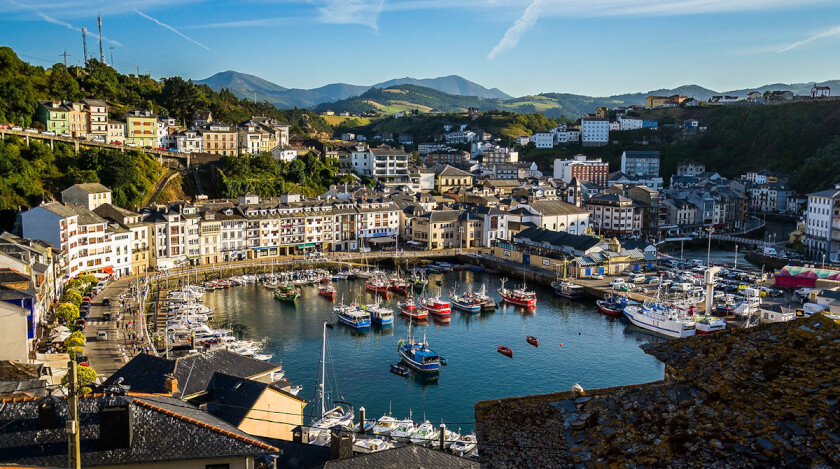
Candás and Luarca are two towns on the Asturian coast, washed by the waters of the Cantabrian Sea. The first is a small fishing village, home of the now-defunct La Flor cannery, founded in 1889, the first of many canneries, all gone, and the other is a smaller fishing village with a similar canning history. Before canning, salting and pickling were the ways to preserve fish, and in the 18th century, Candás had 15 pickling plants and four master coopers. Luarca, however, had a history as the north coast whaling capital. But times have changed. Now the main draw is tourism. The two towns are about 45 minutes apart, and on the 250-mile coastline of Asturias—or even on the 800-mile coastline of northern Spain, where picturesque fishing villages abound—they are not unique. No, nothing special about these two, as fishing villages.
But turn away from their pretty ports and the boats moored there and the sidrerías, restaurants specializing in seafood and cider, with their port-side terraces just meters from the water, and you’ll soon see signs in each of another industry—bollería, which is any breadlike food, from rolls (bollos) to pastries (pasteles) to cookies (galletas). In both these villages, it’s the cookie that is famed, both kinds plain, both made from butter, sugar, eggs, and flour, both delicious: bollinos from Luarca and marañuelas from Candás.
Bollinos are larger, crumblier, sweeter, marañuelas smaller and denser. Is a marañuela to a bollino as a parrocha, a fresh anchovy, is to a sardina: different size, similar taste, essentially the same satisfaction on biting into one? Or is the difference more one of style, the difference between fried cuttlefish and the grilled version, chipirones fritos and chipirones a la plancha? Or is it texture, the feel of the morsel in your mouth, as you might distinguish the firm mussel of mejillones a la vinagreta from the softer mussel prepared a la marinera? Wherein lies the mystery of difference? Or is it all of these distinctions that make two very similar products worthy of much, slow investigation, bite by bite? At the end of each cookie, each time, I am left with the simple truth that they are both unfailingly delicious.


